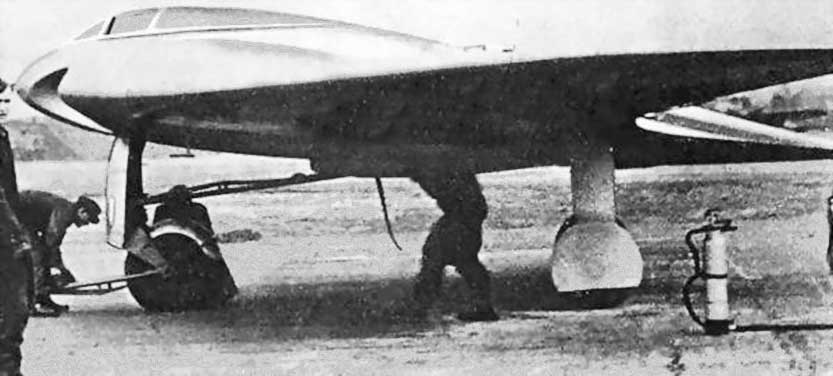

| The Horten Ho IX or Go 229 was conceived by the brothers Reimar and Walter Horten, pioneers of flying wing aircraft. In 1943 they start to design a twin engined jet powered flying wing called Ho IX. At the beginning of 1944, the RLM realized of the existence of design as did Hermann Goering who gave all his support to the Horten brothers and there novel aircraft. |
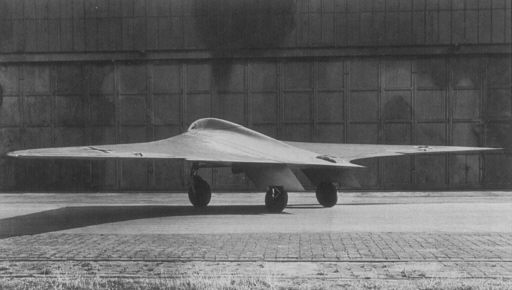 |
Flight tests started on the 1/3/1944 with the V-1, which was built as a unpowered glider. The tests were considered by all to be very satisfactory, so the go ahead was given for the Ho IX V-2 which was scheduled to fly in May/June 1944. This aircraft was designed to be to be fitted with a pair of BMW 003 turbojet engines, but the engine type was changed from BMW to Junkers, which meant a major redesign of the center section of the aircraft as the diameter of the engines was 20 cm greater! delaying the first flight by some time. The Horten Ho IX V-1
|
|
In the summer 1944, Gothaer Waggonfabrik received a contract for the production of the new aircraft under the designation of Go-229. The Gotha company (which had produced the famous Gotha bombers of World War I) was an excellent choice as they had a great deal of experience in building gliders for the Luftwaffe. In December 1944 the drawings were handed over to Gotha who immediately began work modifying the designs in order to adapt it to the series production. Provision was made for the installation of 2x 30mm cannons, an ejection seat, hard points were also installed under the wings for bombs or auxiliary fuel tanks as well as strengthened landing gear, this aircraft, the V-3 was nearly completed at the wars end. |
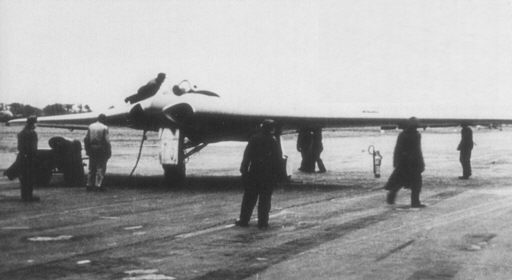
|
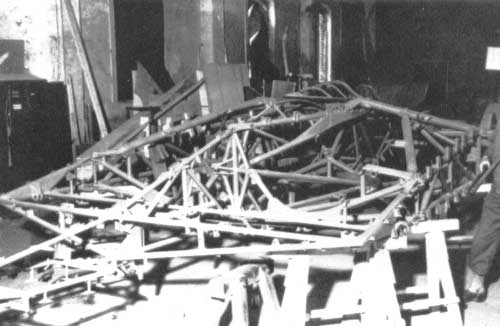
|
By the time the factory was occupied by American troops in late April 1945 and all development stopped, the first 20 pre-production aircraft were in a advanced state of construction with various subassemblies being found in the factory, as well as the V-6 a two seater trainer. The construction of the Gotha Go 229 was interesting as it was designed from the out set to save on resources by using steel tubing and scrap wood. The center section was built out of steel tubes and covered with a composite skin (except in the vicinity of the engine exhausts where metal was used). The "skin" comprised of two 1.5mm ply wood sheets which sandwiched a 12mm layer of sawdust, charcoal and glue, this was designed to make the aircraft invisible to radar as it had been found that the "skin" would absorb the radar waves and give a very small reflection. The wings were made wholly out of wood and contained the fuel in cells, they were also covered in the same composite skin. |
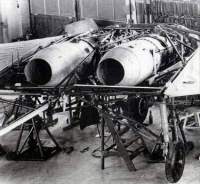 |
 |
|
Two Views of the Go 229-V2 under
construction late 1944
|